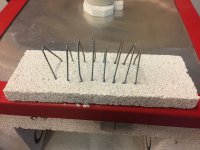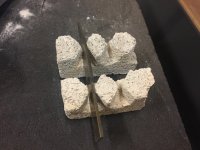Slash McCoy
I freehand dog rockets
My new Paragon thermostatically controlled electric heat treat oven is coming next week. No more barbecue grill razors. I know that forge heat treated razors are best made with 1080 or 1084, but if I follow the standard protocols with 1095 is it pretty foolproof? And are there any advantages to 1095 or O1? Thanks. BTW I have O1 and 1095 on hand.

